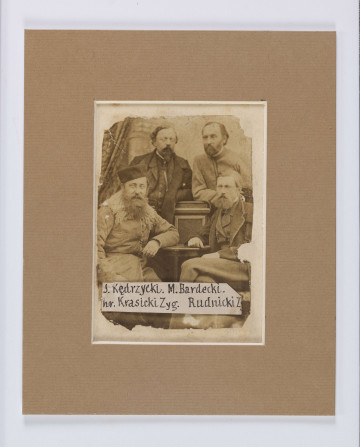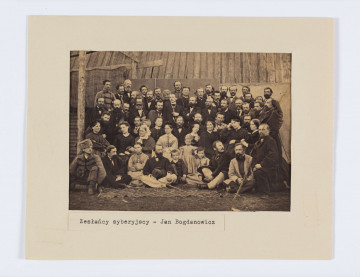
Janusz Kossakowski and Wincenty Herbst
1863
National Museum in Lublin
Part of the collection: Memorabilia related to the November and January Uprisings in the Lublin Region
National celebrations became possible in Lublin in the second half of 1915, when the Russian Army withdrew from the city. After the Austrians entered the Russian partition there was relative social and political freedom. This situation was immediately taken advantage of, and in December of the same year, the Committee for the Celebration of the Anniversary of the 1863 Uprising was formed, which took charge of organising the celebrations.
Lublin's celebrations began on 22 January 1916 with the laying of a commemorative plaque in the Powizytkowski church. A memorial service was then held. This was followed by the presentation of commemorative crosses to all veterans who attended. Those who needed it received material assistance, clothing and food. On the same day, in the evening, the celebrations continued in the Grand Theatre (now the Juliusz Osterwa Theatre) in Lublin. The theatrical programme consisted of poems, songs, lectures and a play entitled Dyktator [The Dictator] by Jerzy Żuławski (1874-1915), a Polish philosopher, poet and writer. The drama was written in 1902 and premiered in Lviv a year later, during the celebrations marking the 40th anniversary of the outbreak of the uprising. It told the story of the uprising's leader Marian Langiewicz.
The programme included Kucie kos [The Forging of the Scythe] and Obrona Sztandaru [Defence of the Banner], staged as live paintings. At the turn of the 19th and 20th centuries this was a very popular form of communication, for which the actors wore period costumes. Kucie kos was recreated based on a drawing by Artur Grottger. The artist, unable to fight in the uprising due to poor health, put his talent at the service of his homeland. He created cycles of drawings, such as Polonia and Lithuania, dedicated to regaining independence.
The performance was followed by a gala dinner. Soon afterwards, the 1863 Veterans Support Committee was founded, with Henryk Wiercieński elected as its president.
Author / creator
Dimensions
cały obiekt: height: 23 cm, width: 33 cm
Object type
theater program
Technique
Material
paper
Creation time / dating
Creation / finding place
Owner
The National Museum in Lublin
Identification number
Location / status

1863
National Museum in Lublin

1863
National Museum in Lublin

1864 — 1867
National Museum in Lublin
DISCOVER this TOPIC
Castle Museum in Łańcut
DISCOVER this PATH
Educational path